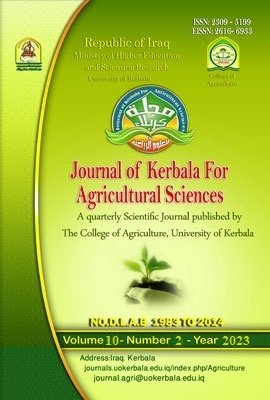The Efficiency of Beauveria bassiana, Metarhizium anisopliae and Lecanicillium muscarium against different stages of the flour beetle, Tribolium castaneum (Herbst) (Coleoptera: Tenebrionidae)
DOI:
https://doi.org/10.59658/jkas.v10i2.1182Keywords:
Beauveria bassiana, Metarhizium anisopliae, Lecanicillium muscarium, Tribolium castaneumAbstract
This study evaluated the efficacy of commercial formulations of Metarhizium anisopliae, Beauveria bassiana and Lecanicillium muscarium against different stages of T. castaneum. All commercial formulations were tested against the insects using a topical spray under laboratory conditions. Insects were sprayed with conidial concentration 3 × 108 conidia/ml of B. bassiana or M. anisopliae and 2 × 107 conidia/ml of L. muscarium. Mortality was recorded daily for seven days while insects were kept on wheat flour. All commercial formulationsshowed an effect on T. castaneum; however, B. bassiana and M. anisopliae were more effective than L. muscarium at the concentrations tested. However, susceptibility showed significant differences in percentage mortality at the end of the experiments between first, third, and sixth instar larvae and adults treated with all three commercial formulations. First and third-instar larvae were most susceptible, and sixth-instar larvae and adults were least vulnerable to infection. In all experiments, the temperature had no significant effect on insect mortality caused by B. bassiana, M. anisopliae, and L. muscarium. There was a small difference in the insect mortality level for each fungus between 25°C and 30°C. All fungi were slightly, but not significantly, more effective at 25°C. The strains of all fungi tested caused significant mortality of T. castaneum by contact.
Downloads
Published
Versions
- 06/20/2023 (3)
- 06/20/2023 (2)
- 06/18/2023 (1)
How to Cite
Issue
Section
License
Copyright (c) 2023 Copyright (c) 2024 is the Author's article. Published by the Journal of Kerbala for Agricultural Sciences under a CC BY 4.0 license

This work is licensed under a Creative Commons Attribution 4.0 International License.
Licensing Terms
All articles are published under a Creative Commons License and will be directed to the Creative Commons Attribution 4.0 International License (CC BY 4.0) That permits use, distribution, and reproduction in any medium, provided the original work is properly cited. This license also allows the work to be used for commercial purposes.
Use by both non-commercial and commercial users
This content is licensed under a Creative Commons Attribution 4.0 International (CC BY 4.0) license, permitting use by both non-commercial and commercial users. Individual users may access, download, copy, display, and redistribute the articles to colleagues, as well as adapt, translate, and text- and data-mine the content, subject to the following conditions:
- The author's moral rights, including the right of attribution and the right to protect their work from derogatory treatment, are respected.
- Where content in the article is identified as belonging to a third party, users must ensure that any reuse complies with the copyright policies of the owner of that content.
- If the article content is reused for research or educational purposes, users should maintain a link to the appropriate bibliographic citation, including the DOI and a link to the published version on the journal's website.






